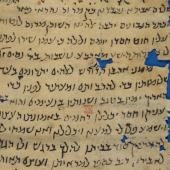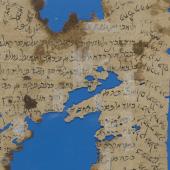-

'May the elder Abu’l-Khayr Khiyyar pay to the bearer five dinars for wax candles'
-

'We inform him of our discovery that these three people were taken from a ship and were robbed of everything'
-

'And the property belonging to the heirs of the rabbi’s son, in partnership with the judge, Ali ibn Qasam'
-

'do not worry. He who saved me from the desert… will save me while on sea'
Dirhams and Dinars
Discarded History
Egypt sat at the centre of a vast international trading network that stretched from Spain, around the Mediterranean, and as far as India. Commerce flourished across the barriers of faith, and Jews and Muslims launched joint business ventures together. Jewish merchants made use of their family and religious connections to trade over long distances. They relied on bonds of trust to ensure the flow of goods and the settlement of debts.
The backbone of the medieval Egyptian economy was the trade route to India. Many of the commercial documents in the Genizah are related to this highly lucrative route, which flourished in the 12th century. Goods carried from India to Egypt for sale around the Mediterranean shores included aromatic spices, metals and textiles, while clothing, carpets, books and soap travelled East. Shipwrecks and piracy were a constant threat.